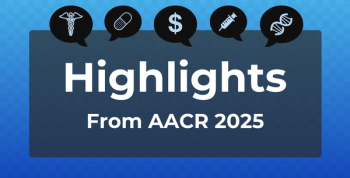
Social Vulnerability Thought to Impact Diagnosis of HIV and Receival of Care
Communities that are experiencing the most social vulnerability may need stronger preventative measures against HIV and increased levels of HIV care.
An analysis of CDC data found that the rate of
The findings,
This study was conducted in an effort to decrease health disparities that may be influenced by social vulnerability factors.
According to the study, people who lived in the most socially vulnerable census tracts had the highest rates of HIV diagnosis, with HIV diagnosis rates increasing as social vulnerability increased.
Researchers linked data from CDC’s National HIV Surveillance System (NHSS) and the CDC/ATSDR social vulnerability index (SVI) of the participants. Study participants consisted of HIV-positive Black, Hispanic/Latino, and White adults diagnosed in 2018.
Rate ratios (RRs) with 95% CI’s were calculated to compare the lowest social vulnerability index (SVI) scores to the highest SVI scores according to the demographics of sex and mode of transmission.
Points of weakness presented socially and structurally in communities, like social vulnerability, might contribute to increased HIV infection rates. Social vulnerability factors need to be improved to reduce rates of HIV diagnosis and treatment accessibility, the authors said.
Between Black and White subpopulations, it was discovered that the most within-group disparities in terms of HIV diagnosis rates and percentages existed between adults in these groups.
Individuals who injected drugs within the most socially vulnerable census tracts were discovered as having the strongest diagnosis percentages and the most severe HIV diagnosis rate disparities.
Compounding factors in addition to existing SVI’s like being an older adult and/or living in the Northeast area of the United States, strengthens the already increased probability of diagnosis due to the unique regional characteristics that the Northeast region presents and the unique needs of older adults.
The data shows that the Northeast location has the highest geographic disparity in HIV diagnosis in the United States. Black and Hispanic/Latino populations and people who inject drugs are at the highest risk of infection with HIV.
Like the extenuating impacts experienced by Black/African American and Hispanic/Latino populations, residents of the Northeast United States may also be influenced by poverty, restricted ability to obtain health care, difficulties with transportation, and unstable housing that make it even more difficult to receive treatment and testing for HIV.
Researchers believe that income inequality is a main contributor to these extra barriers and are encouraging action be taken on behalf of Northeast residents especially because income inequality is the most severe in the Northeast.
Older adults can experience existing detriments in care due to the lesser likelihood of inquiry by medical professionals into their sexual activity and history and a lesser likelihood of getting tested for HIV. Older patients themselves might be too shy to bring up any sexual history and believe that HIV symptoms they might be experiencing are part of the aging process.
The researchers discuss the possibility that Black/African American and Hispanic/Latino populations encounter other socially detrimental circumstances such as racism, discrimination, language and culture barriers, that can restrict their ability to receive quality care, or care at all.
Of the Hispanic/Latino population, researchers discovered that the demographic of non-US-born people have a higher likelihood of late-stage HIV diagnosis, a lower survival rate after the development of AIDS, and to only receive care once the disease has progressed to later stages.
Researchers recommended that further study into social vulnerabilities be conducted to better identify where changes need to be made to increase testing and care access.
Reference
Gant Z, Dailey A, Hu X, et al. A census tract–level examination of diagnosed HIV infection and social vulnerability among Black/African American, Hispanic/Latino, and White adults, 2018: United States. J Racial Ethn Health Disparities. Published online November 16, 2022. doi:10.1007/s40615-022-01456-7
Newsletter
Stay ahead of policy, cost, and value—subscribe to AJMC for expert insights at the intersection of clinical care and health economics.









































